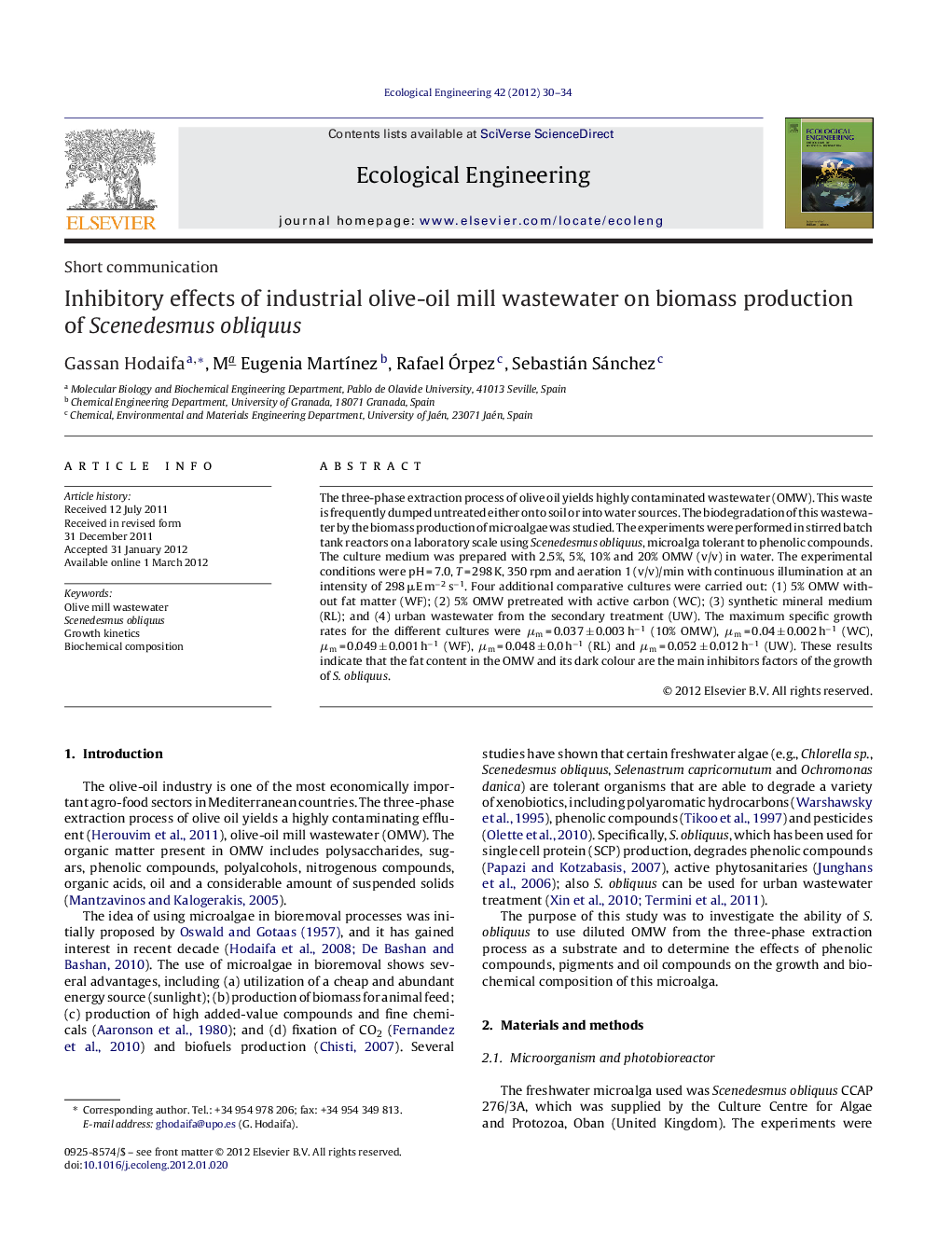| Article ID | Journal | Published Year | Pages | File Type |
|---|---|---|---|---|
| 6302744 | Ecological Engineering | 2012 | 5 Pages |
Abstract
The three-phase extraction process of olive oil yields highly contaminated wastewater (OMW). This waste is frequently dumped untreated either onto soil or into water sources. The biodegradation of this wastewater by the biomass production of microalgae was studied. The experiments were performed in stirred batch tank reactors on a laboratory scale using Scenedesmus obliquus, microalga tolerant to phenolic compounds. The culture medium was prepared with 2.5%, 5%, 10% and 20% OMW (v/v) in water. The experimental conditions were pH = 7.0, T = 298 K, 350 rpm and aeration 1 (v/v)/min with continuous illumination at an intensity of 298 μE mâ2 sâ1. Four additional comparative cultures were carried out: (1) 5% OMW without fat matter (WF); (2) 5% OMW pretreated with active carbon (WC); (3) synthetic mineral medium (RL); and (4) urban wastewater from the secondary treatment (UW). The maximum specific growth rates for the different cultures were μm = 0.037 ± 0.003 hâ1 (10% OMW), μm = 0.04 ± 0.002 hâ1 (WC), μm = 0.049 ± 0.001 hâ1 (WF), μm = 0.048 ± 0.0 hâ1 (RL) and μm = 0.052 ± 0.012 hâ1 (UW). These results indicate that the fat content in the OMW and its dark colour are the main inhibitors factors of the growth of S. obliquus.
Related Topics
Life Sciences
Agricultural and Biological Sciences
Ecology, Evolution, Behavior and Systematics
Authors
Gassan Hodaifa, Mª Eugenia MartÃnez, Rafael Ãrpez, Sebastián Sánchez,
